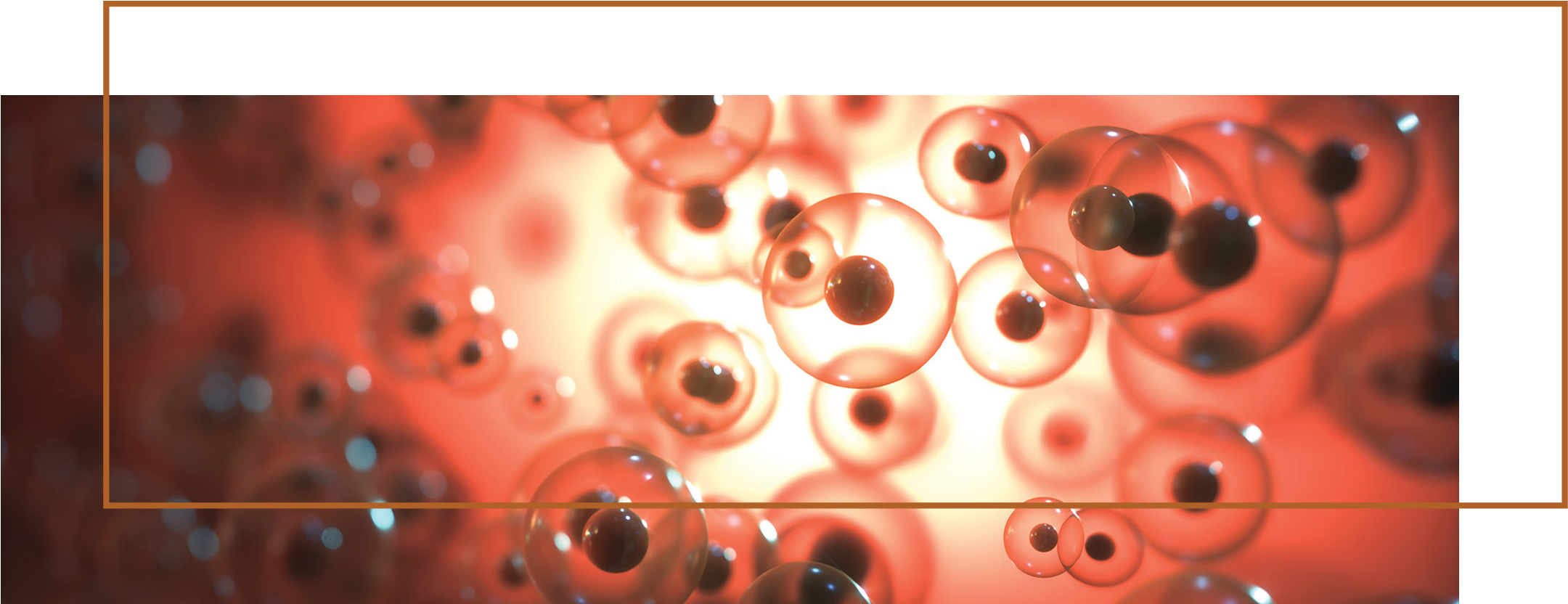Glutathione (reduced and S-acetyl-L-Glutathione)
Glutathione serves as the body’s primary defense against toxins and free radicals. Concentrated in cells, especially in the liver, it safeguards cellular structures and is crucial for detoxification. It eliminates harmful substances while supporting the metabolism of compounds like excess hormones. Essential for immune function, it helps alleviate inflammatory conditions. Its unique ability to recycle other antioxidants ensures antioxidant activity. Glutathione levels naturally decline with age and can be lacking in those with common GSS gene mutations. DetoxiGenic’s glutathione boasts unique features that distinguish it from other forms of glutathione. The acetyl group improves stability and absorption in the gut, increasing systemic glutathione levels. This form also enhances cell penetration, vital for effectiveness, resulting in better bioavailability compared to other glutathione forms.3
NAC (N-Acetyl-L-Cysteine)
NAC is a vital precursor to glutathione, a potent antioxidant that aids in detoxification. By supplying the necessary cysteine for glutathione synthesis, NAC supports the body in neutralizing toxins and free radicals. Additionally, NAC influences healthy gene expression, such as NRF2, which is responsible for antioxidant defense and detoxification pathways. This makes NAC a valuable supplement for supporting overall cellular and detoxification mechanisms while also enhancing liver functions and health.11
Folate/5-MTHF (5-Methyltetrahydrofolate)
5-MTHF is a critical component of pathways that help the body produce glutathione. DetoxiGenic utilizes a methylated form of folate that supports cellular metabolism, even in the presence of MTHFR genetic complications.12,13
Methylcobalamin/ Hydroxycobalamin/ Adenosylcobalamin (Vit B12)
Methylated B12 from natural sources and B12 derived from bacteria are both protected by glutathione from harmful molecules. B12 also acts as a catalyst, helping the body produce glutathione. This beautiful symbiotic relationship helps to address MTHFR methylation concerns while supporting B12’s functions for detoxification and various crucial body functions.14
Chromium (Picolinate)
Chromium supports the proper metabolism of glucose, reducing the likelihood of harmful reactive oxygen species (ROS) associated with inefficient metabolism. Additionally, it indirectly influences the activity of antioxidant enzymes, including superoxide dismutase (SOD) and catalase, which helps neutralize ROS and alleviate oxidative stress. Furthermore, chromium may contribute to maintaining metal ion balance, a crucial factor in preventing oxidative damage by avoiding excess metal ions that can lead to ROS formation.15
Alpha Lipoic Acid
Second in importance to the cell after glutathione, this ingredient is involved in energy production, blood sugar control, brain health, and the body’s normal purification processes. Alpha lipoic acid is often depleted due to stress and aging. Additionally, it is known to work with anti-aging genetics like NRF2 to enhance antioxidant capacity and extend cellular health.16
Milk Thistle
Milk thistle, specifically its active compound silymarin, interacts with various genes and pathways to support liver health and detoxification. It enhances the activity of phase II detoxification enzymes, including glutathione S-transferases (GSTs), which are crucial for detoxifying and excreting toxins. This interaction also contributes to its liver-optimizing effects and influences genes involved in antioxidant defenses and anti-inflammatory pathways, promoting overall liver health.17
Taurine
Taurine has antioxidant, liver, and central nervous system enhancing properties. It enhances detoxification by influencing CYP genes that enhance the activity of cytochrome P450 enzymes, which metabolize drugs and toxins. Additionally, taurine can conjugate with foreign substances (xenobiotics), enhancing their water solubility and aiding their elimination through urine, thereby supporting the detoxification process and drainage.18,19
Ribose
Ribose is a highly absorbable sugar desired by the cells. When combined with cysteine, it increases production of glutathione in the body.20
Vitamin C
Vitamin C supports normal antioxidant levels in red blood cells.21 It also works to regenerate glutathione for optimal cellular health.22
Glutamine
Glutamine is a precursor nutrient necessary for the body to make glutathione.23
Theobromine
Theobromine is a powerful phytonutrient derived from the cacao plant. It activates glutathione peroxidase (GPx) genes in the liver, which manage oxidative stress caused by reactive oxygen species (ROS). This helps protect cells against damage and runaway inflammation.24
Para-Aminobenzoic Acid (PABA)
PABA is a molecule involved in the GST pathways of detoxification. It helps remove the toxins from the body and eliminate pharmaceutical metabolites, especially those used to treat cancer.25
Thiamin HCl/Benfotiamine (Vit B1)
Benfotiamine is a form of vitamin B1 that is much more bioavailable than most other forms on the market. It stimulates the protective antioxidant systems in the body to eliminate reactive oxygen species (ROS), making it particularly effective in protecting the nervous system.26,27
Riboflavin-5-Phosphate (Vit B2)
This is the phosphorylated form of vitamin B2, a required micronutrient involved in the glutathione detoxification pathway. It helps protect against oxidative stress, inflammation, and genotoxic substances.28
Vitamin B6 (Pyridoxine 5-PO4)
This is the biologically active form of vitamin B6, a necessary coenzyme involved in numerous reactions in the body. It has been shown to prevent oxidative stress in cells exposed to reactive oxygen species (ROS), ultimately preventing programmed cell death.29
Pantothenic Acid (Vit B5)
Vitamin B6 is a building block for the molecule known as coenzyme A (CoA), which is required for a majority of biological reactions, including crucial steps of energy production that take place in the mitochondria. When the systems of the mitochondria do not function properly, reactive oxygen species (ROS) can run unchecked, leading to oxidative stress, inflammation, and cell death.30
Magnesium
Magnesium is involved in more than 300 biochemical reactions in the human body. Insufficient magnesium can lead to rampant oxidative stress, which is particularly damaging when tissues are exposed to toxins like lead because the body can’t manage the oxidative damage. Ensuring adequate magnesium levels can help prevent excessive damage incurred by toxin exposure.31
Manganese
Manganese is critical to the function of SOD2 enzymes. Without it, mitochondria would not function properly due to excessive oxidative stress.32
Cardamom (Seed)
Cardamom is a spice that has been used historically across cultures for medicinal and culinary purposes. It has been shown to protect against damage caused by environmental toxins.33





